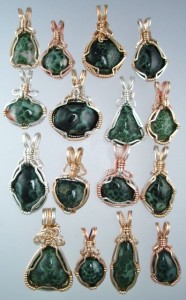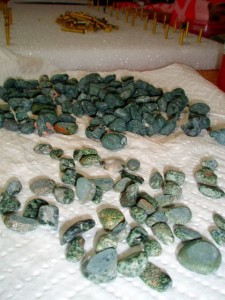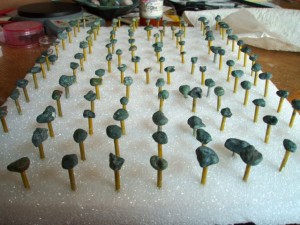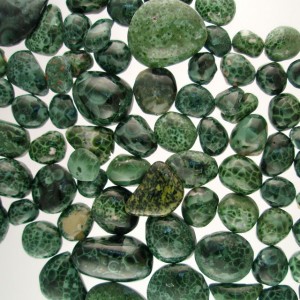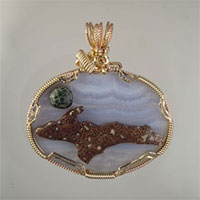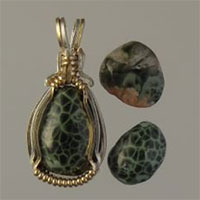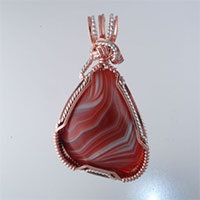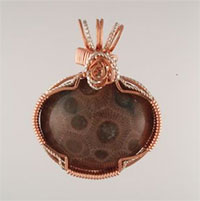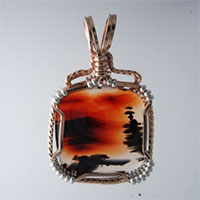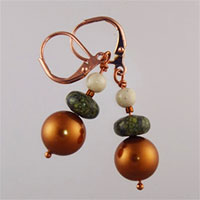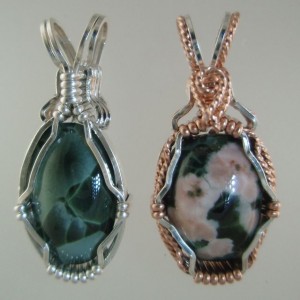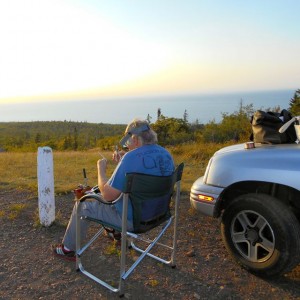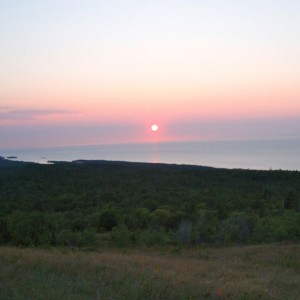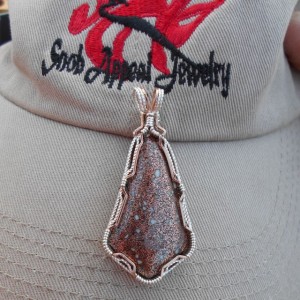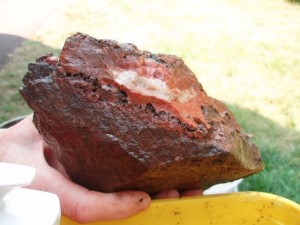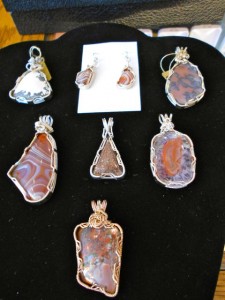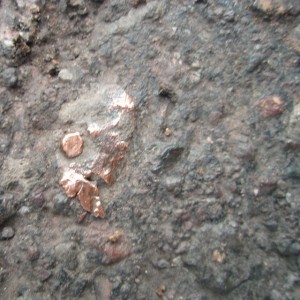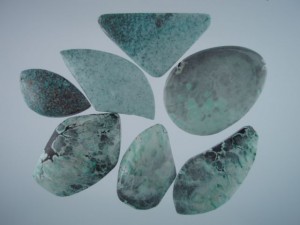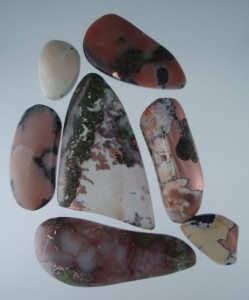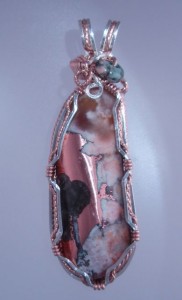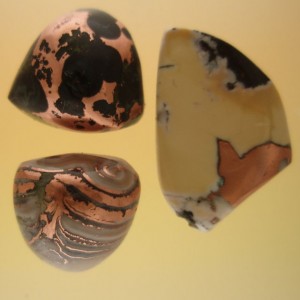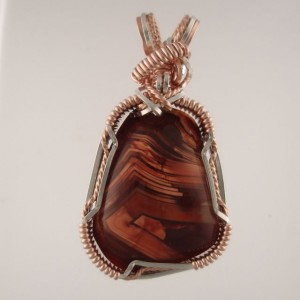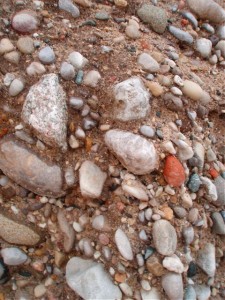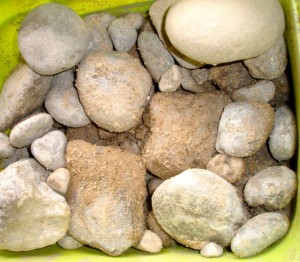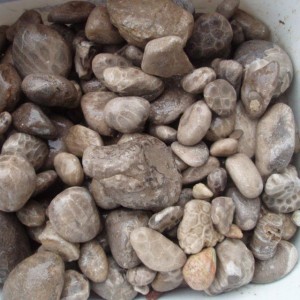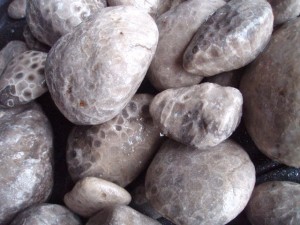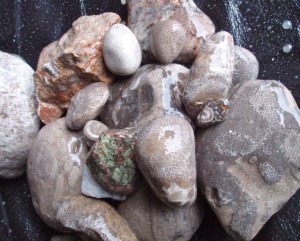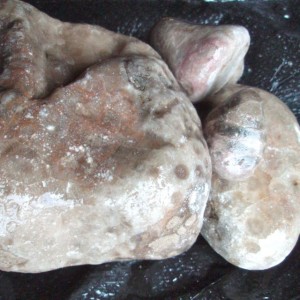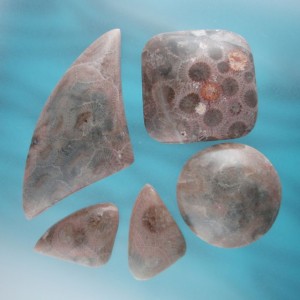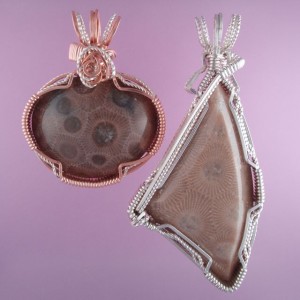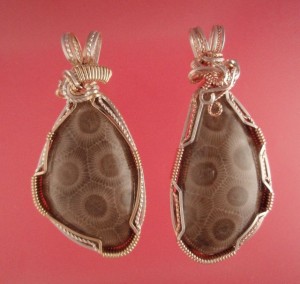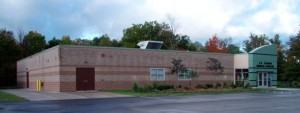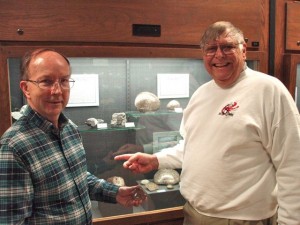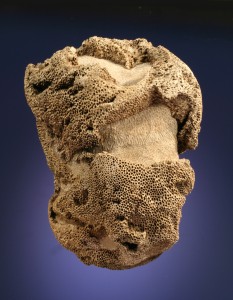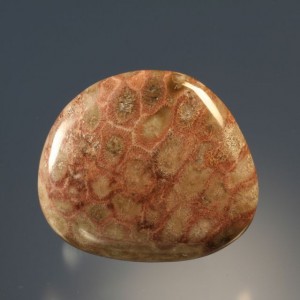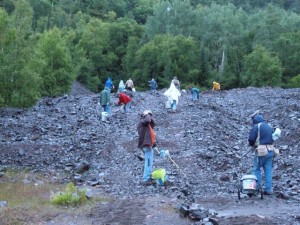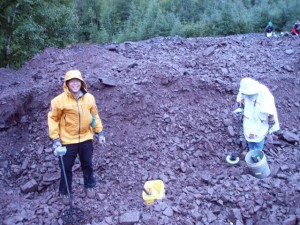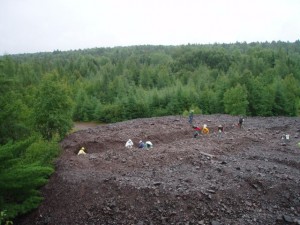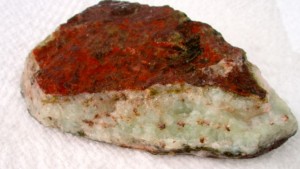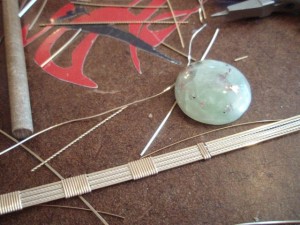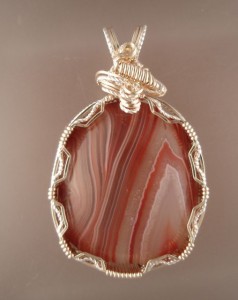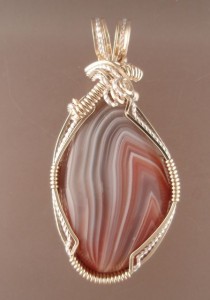“Pink Petoskey Stones from Northern Michigan” is the title of a feature article in the May/June edition of Rocks and Minerals Magazine written by Dr. George Robinson with me as coauthor. George is past Director and retired Curator of the A.E. Seaman Mineral Museum at Michigan Tech in Houghton, Michigan. The Museum is the official State Mineral Museum of Michigan and boasts the finest collection of minerals from the Copper Country in the world.
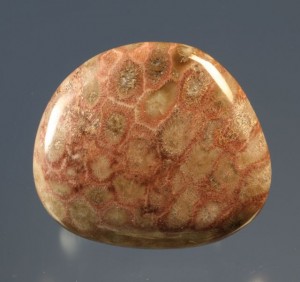
Pink Petoskey Stones get no better than this one. I could not in good conscious keep it for myself, so I donated it to the A.E.Seaman Mineral Museum. You can see it in the Petoskey Stone/Michigan Fossil Case.
If you search the Seaman Museum, you will see a very fine Pink Petoskey Stone that I found, polished, and donated.
When you read the article in Rocks and Minerals, you will find the cause of the pink coloration is Iron that permeated into the Hexagonaria Coral as it Calcified. People have asked me if Petoskey Stone is the only Devonian Fossil that shows saturation of iron, and the answer is no.
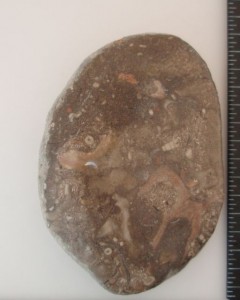
Pink has permeated into Devonian Bivalve Shells in this fossil soup.
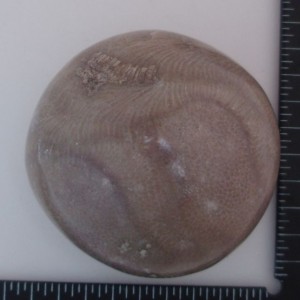
A Favosites sports a nice pink tinge.
Any Devonian Fossil can show evidence of iron deposition. I have seen pink hues in Horn Coral, Favosites, and even Clams from this period.
Since Dr. Robinson has researched the cause of the pink in Petoskey Stones (and these other Devonian Fossils), I will not expand on that in this article. Rather I would concentrate on helping you find some of these rare beauties.
The high quality Petoskey Stones that I find are concentrated in NW lower Michigan in glacial tills and on the beaches of Lake Michigan. I have found the Petoskey Stones on the east side of Michigan are not generally of the quality I find on the west side. These east side stones tend to be porous and will not take the high polish that a more solid stone will take. Quality Jewelry and nice specimens require solid stones. Don’t get me wrong, some nice stones have been found on the east side, but I’m happy I spend my time hunting on the west side.
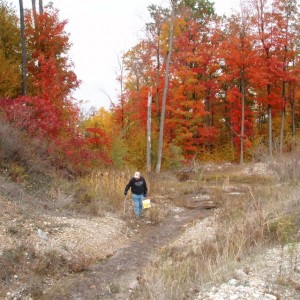
Hunting in an old gravel pit or small stream may produce some nice Pink Petoskey Stones. Most people hunt the shorleline, but there are other areas to find Pink Pets.
A good stone is solid with a clear pattern (not muddy). This is what I look for. It is hard to find a Pink Petoskey without flaws (pits, holes, and the like). I believe somehow the Iron Oxide in the Calcite is a causation in the weakening of the structure of these rare stones. In addition, there is never any guarantee as to how far into a stone the pink coloration permeates. It could be surface color or just as easily be throughout the stone. We do not know how deep the pink goes in a stone unless it is cut.
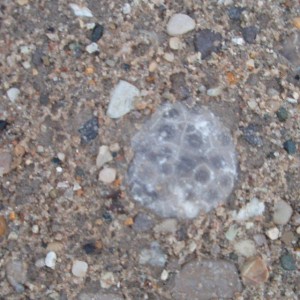
A nice Pink Pet is hidden in the gravel.
Most of you know that the Petoskey Stone is Michigan’s State Stone. Hexagonaria Corals are not strictly concentrated in Michigan, but indeed are found around the world. The finest Petoskey Corals are found in Michigan.
How can you find a Pink Pet? Over many years of hunting I have discovered that perhaps one out of 300 Petoskey Stones may display some pink. The pink hue can permiate thoughout the stone, or may be only skin deep. Rockhounds should stay alert for Petoskey Stone with a pink hue, instead of just looking for the common greys associated with the calcified Petoskey Stone.
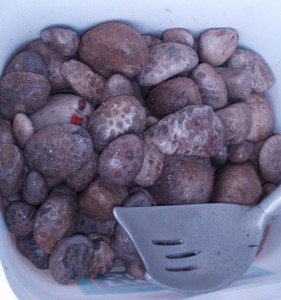
Some Pink Petoskey Stones are hidden in the days catch.
The grey color of Petoskey Stones can vary. The difference between the light colored and the dark colored Petoskey is the level of petroleum in the stone. When I polish a darker stone I can actually smell a distinct odor of petroleum. Darker stones, because of their petrolem content, tend to take a higher shine than their light colored brothers. When iron is deposited with the calcified Petoskey the colorations very with light stones showing classic pink in the patterns and dark stones becoming almost a mahogany color.
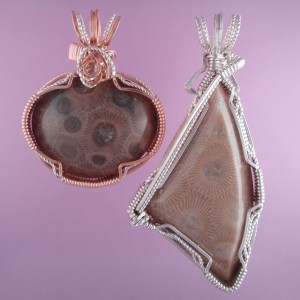
You can see the difference between the dark pink and the light pink in these pendants I made.
Where do you look for rare Pink Pets after you telling yourself to think pink? I am not going to give up my secret spots of course, but I will say that I find many on the gravel back roads on a rainy day. Petoskey Stones are elusive when dry, but “pop” when wet. Any rainy day, we are out looking. Property owners in NW Michigan are very protective (and have weapons), so do not trespass. Private property includes many gravel pits as well. So get permission before hunting. You are not trespassing if you are hunting rocks on the public roads, but of course, use caution while hunting. Road cuts are another place not to pass up in your search. Utility poles generally designate the road right of way in Michigan, so if you are inside the utility poles, you are probably on public property. You will want a container to put your treasures into, and my favorite is a large ice cream bucket.
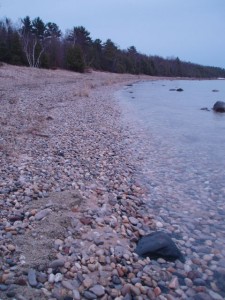
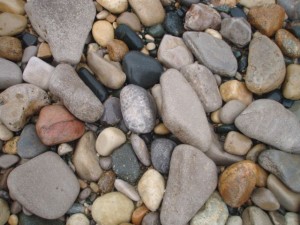
They try to hide...
Beaches, as well as back roads, produce Petoskey Stones. I am surprised by the novice Petoskey Hunters that think they have to go to the Petoskey area to find Petoskey Stones. Anywhere from Manistee to I75 and north is prime hunting for quality Petoskey Stones but Manistee east to Alpena and north is good hunting. The Straights of Macinaw seems to be the end of good Petoskey Stone hunting as flat broken rocks inhabit the shoreline.
When enjoying northern Michigan, and the weather turns wet, make lemonade out of lemons and go for a wet hike on the beach, along a roadway, or a roadcut and look for that rare pink Petoskey Stone.
Snob Appeal Jewelry can Polish, cut, and make jewelry from your rock finds. Just contact us through this website.
http://www.snobappealjewelry.com
